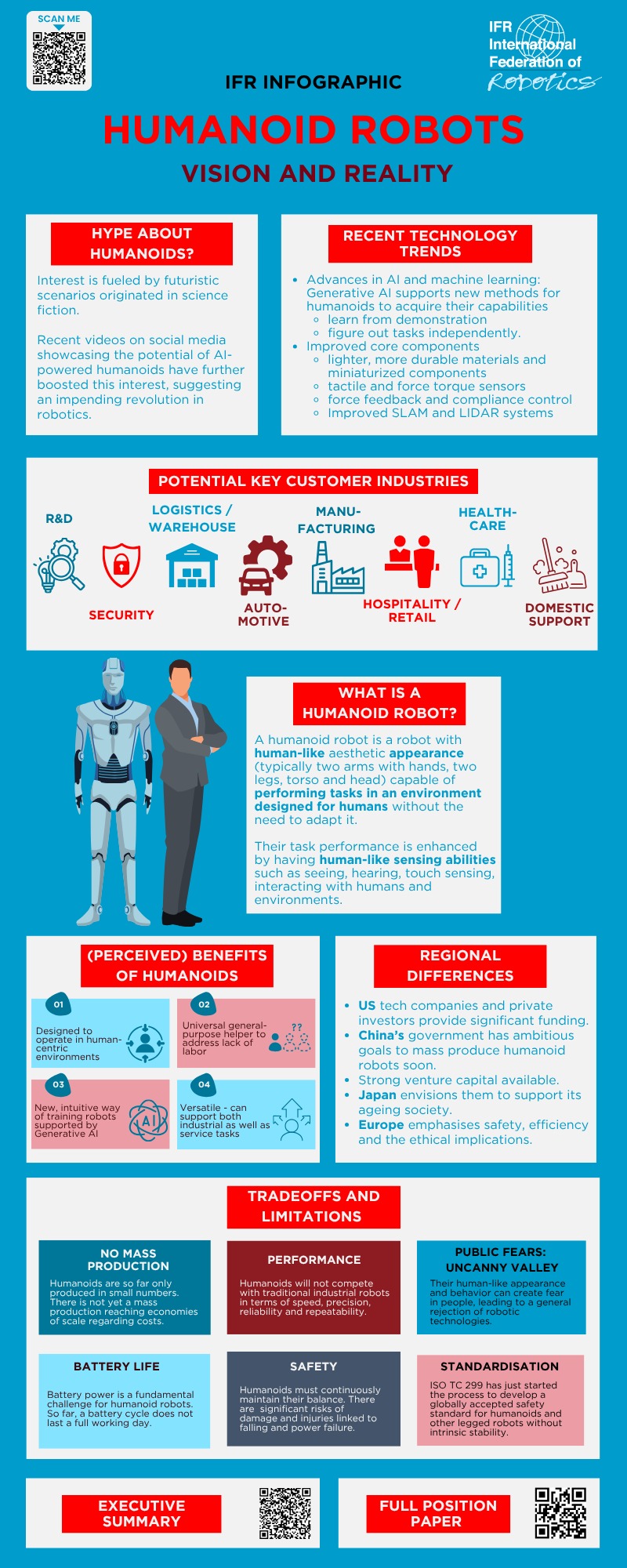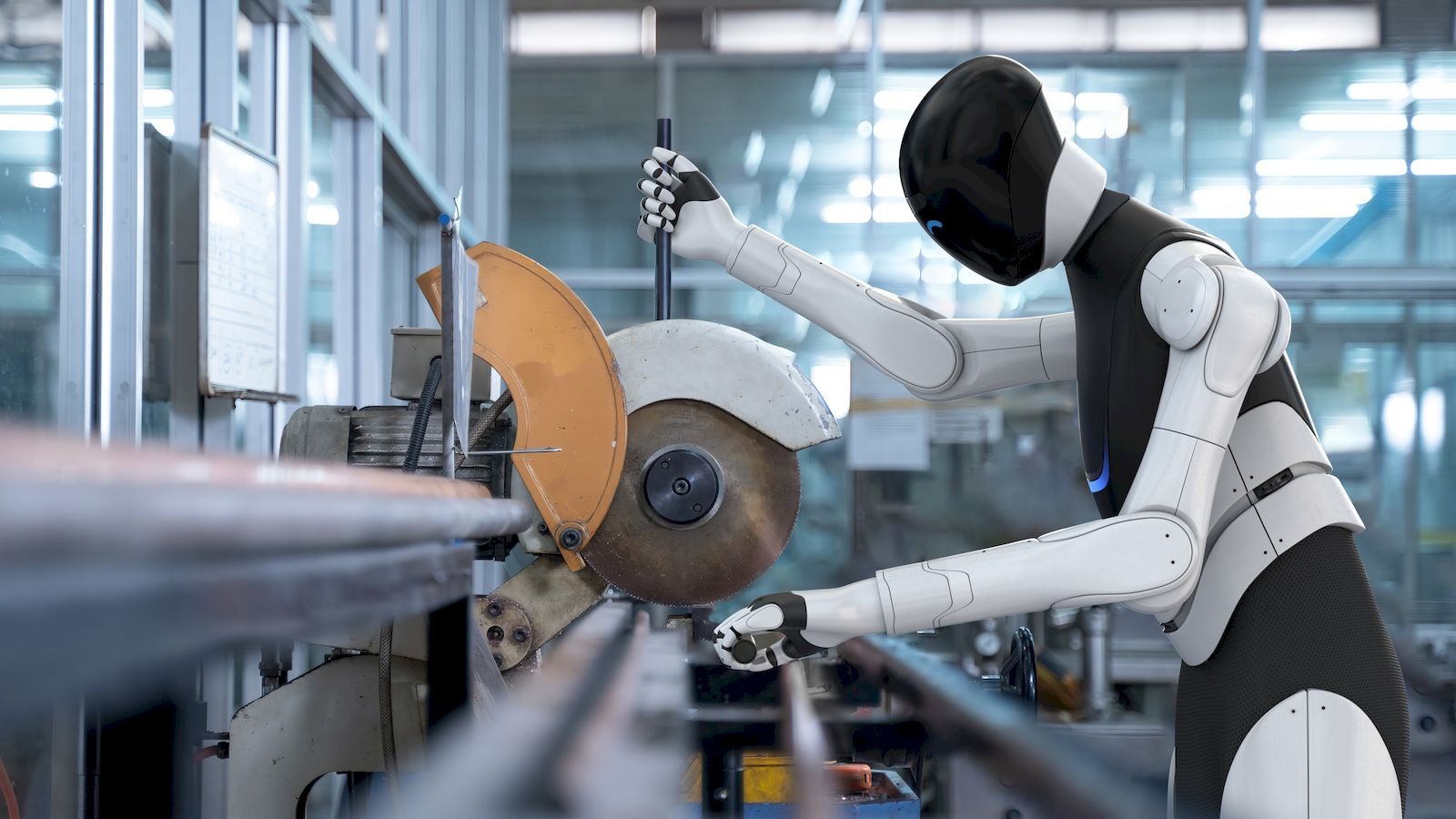El objetivo de la construcción de robots humanoides es abordar tareas en entornos centrados en el ser humano y ampliar los límites de la robótica, tanto en la investigación como en las aplicaciones prácticas. La visión es crear un robot de propósito general capaz de realizar no solo una tarea, sino muchas. La demanda de un asistente rápido y universal para mantener la producción y los servicios es evidente, dado que la mayoría de las economías desarrolladas experimentan una persistente escasez de mano de obra y cambios demográficos inminentes.
Hype about humanoid robots
People’s interest has been fueled by futuristic scenarios involving humanoid robots in homes, businesses, and public spaces. This fascination has a cultural backdrop, as humanoids have long been a staple of science fiction, particularly in film. People are intrigued by the prospect of these fictional depictions becoming reality. Recent videos on social media showcasing the potential of AI-powered humanoids have further boosted this interest, suggesting an impending revolution in robotics.
Robots for human-centric environments
The objective behind constructing humanoid robots is to tackle tasks in human-centric environments and push the boundaries of robotics in both research and practical applications. The vision is to create a general-purpose robot that can perform not just one task, but many. The demand for a quick, universal helper to maintain manufacturing and services is evident given that most developed economies are experiencing persistent labor shortages and impending demographic shifts. To the extent that our environments are optimized for the human body, a general-purpose robot based on human motion mechanics and form factor could have an advantage. As technology evolves, these robots are expected to be increasingly used in fields ranging from industrial use and service use.
Trends driving development
Significant technological breakthroughs have been made in recent years, including advances in AI, machine learning and improved core components, which have enhanced the capabilities of humanoids. In particular, generative AI has led to new methods by which humanoids acquire their capabilities. They can learn from demonstration and even figure out tasks independently. This could also transform the way traditional robots are programmed and pave the way for new application scenarios of smart manufacturing.
US Tech and government invest
The idea of a revolution in robotics is reinforced by major tech companies such as NVIDIA, Tesla and Amazon, as well as private investors, announcing significant funding for humanoid robots. The support of a growing number of start-ups is also contributing to the current hype. Additionally, there is significant interest in their use for military and security purposes, resulting in substantial funding from DARPA and the US Department of Defense.
China promotes humanoid robots
At the same time, China – the world´s largest market for industrial robots – published detailed goals for the country’s ambitions to mass-produce humanoids. China’s Ministry of Industry and Information Technology (MIIT) predicts humanoids are likely to become another disruptive technology, similar to computers or smartphones, that could trans-form the way we produce goods and the way humans live. China’s initiative to promote humanoid robots as a cutting-edge technology is an important next step in integrating robotics with other emerging technologies.

Fuente: https://ifr.org


